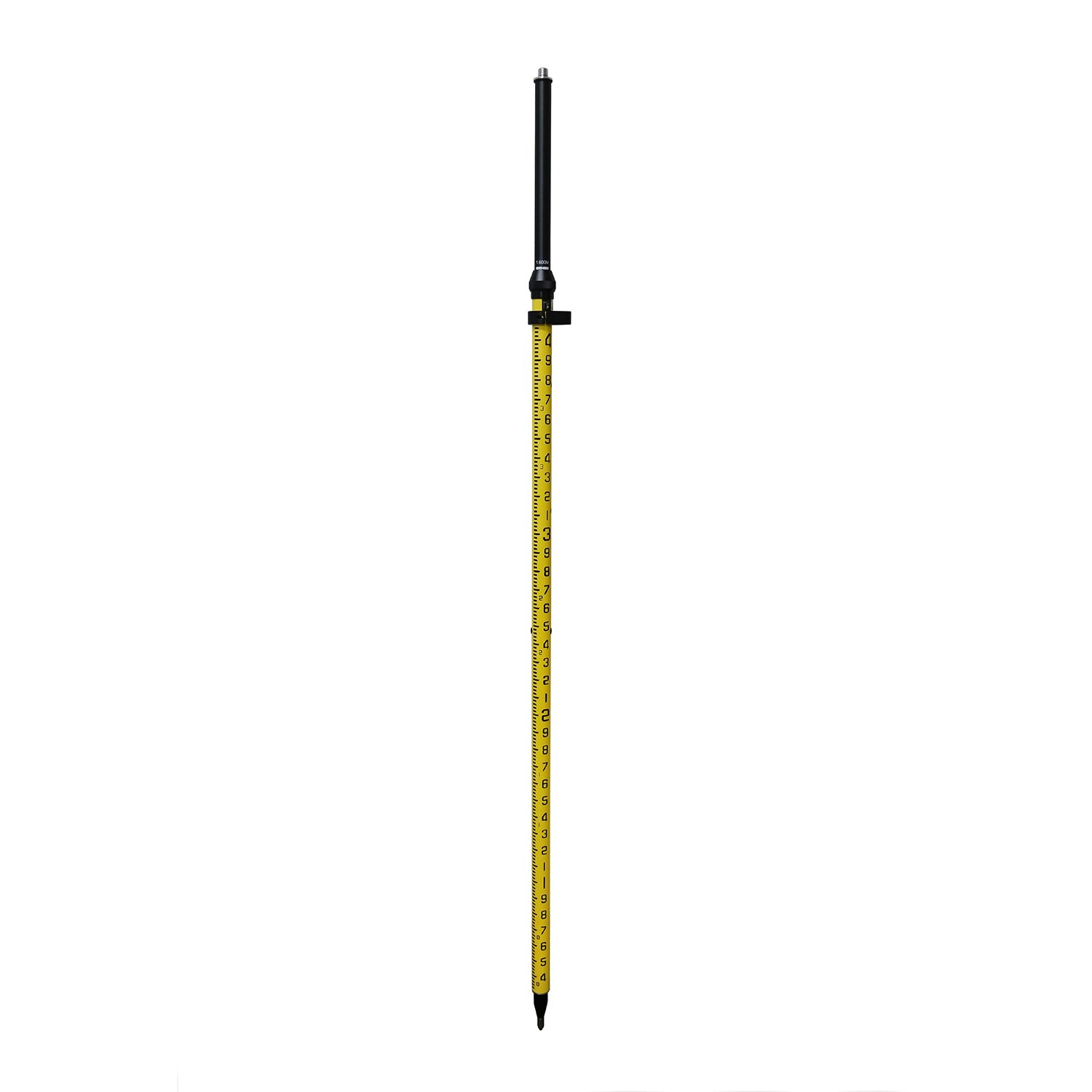2m Telescopic Detailed Aluminum GNSS Rover Pole

2m Telescopic Detailed Aluminum GNSS Rover Pole
2m Telescopic Detailed Aluminum GNSS Rover Pole
Model GRP-200E
Features:
One-piece construction with a double locking system for added stability.
Yellow aluminum outer pole with 10ths/100ths graduations.
Lightweight 32mm aluminum for ease of handling and transport.
Adjustable upper pole with stop positions at 1.6m, 1.8m, and 2.0m for flexible height settings.
Equipped with a 5/8” standard thread and a durable stainless steel tip.
Features an aluminum holder with a 20’ circular bubble level for accurate alignment.
Includes a nylon carry bag for convenient transport.
Specifications:
Model | GRP-200E |
Section & Type | 2sections, telescopic |
Tube Material: | Aluminum, Dia 32mm |
Color | Inner tube: black, |
Outer tube: yellow with 10ths/100ths Graduations. Optional Fluorescent green | |
Open Length | 200cm |
Circular Vial | 20’ |
Compass | No. |
Connecting thread | 5/8’’, stainless steel |
Locking position | 1.6m, 1.8m and 2.0m |
Weight: | 0.99kgs |
Ordering Information:
Model | GRP-200E |
Brand | GeoTech, Neutral or Customer’s brand |
Place of origin | Made in |
Price | To be quoted |
M.O.Q. | 10pcs |
Lead time | 7-10 work days |
Payment terms | T/T, Paypal |
Shipping terms | EXW, FOB, CFR, CIF,DDU |
Shipping method | Courier, air, sea |
Place of delivery | Worldwide |
Packaging | 1pc/box, 10pcs/carton |
Customized service | Yes |
Free sample service | For qualified purchaser |
What is a GNSS rover pole used for?
A GNSS rover pole is used in surveying and geospatial applications to hold and position a GNSS (Global Navigation Satellite System) receiver above the ground. Here's a breakdown of its purpose and functionality:
Positioning: The pole provides a stable and adjustable height for the GNSSreceiver, ensuring that it is at the correct elevation for accuratemeasurements. This is crucial for precise positioning and data collection.
Height Measurement: By elevating the GNSS receiver above the ground, the pole helps inobtaining accurate height or elevation data, which is essential forvarious surveying tasks.
Stability: The pole provides stability to the GNSS receiver, reducingpotential errors caused by movement or vibrations. This is particularlyimportant in challenging field conditions.
Ease of Use: The pole typically has adjustable sections, allowing the surveyorto set the receiver at the appropriate height for different types ofmeasurements or site conditions.
In practice, a GNSS rover pole is often used in conjunction with a GNSS base station to collect accurate location data for mapping, construction, and other surveying applications.


